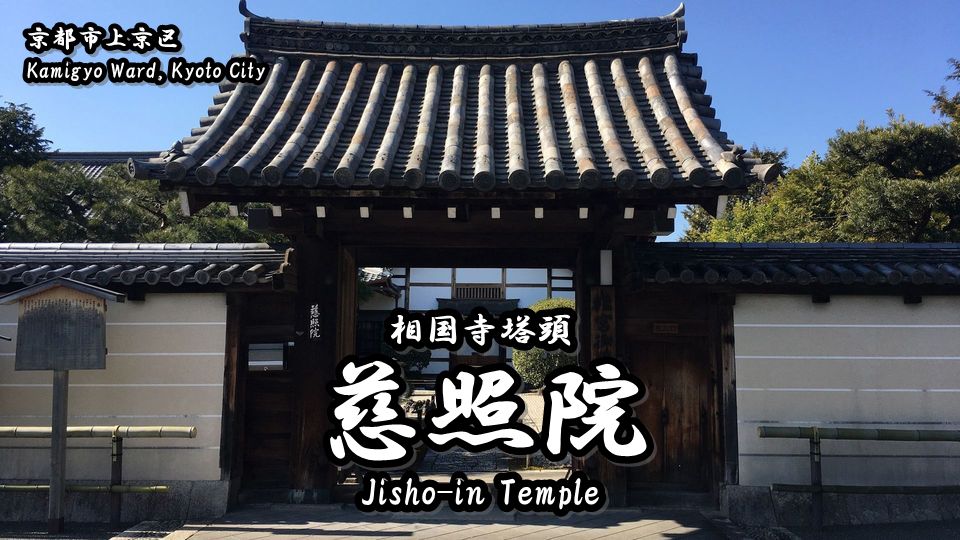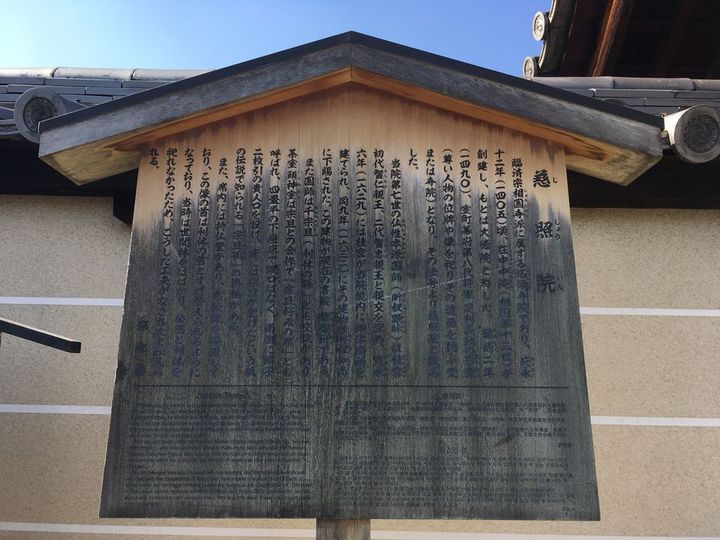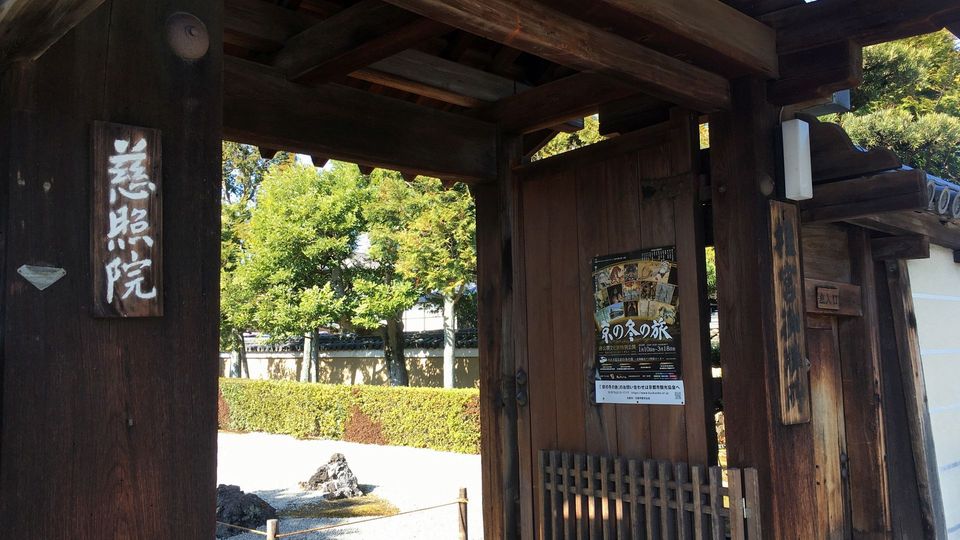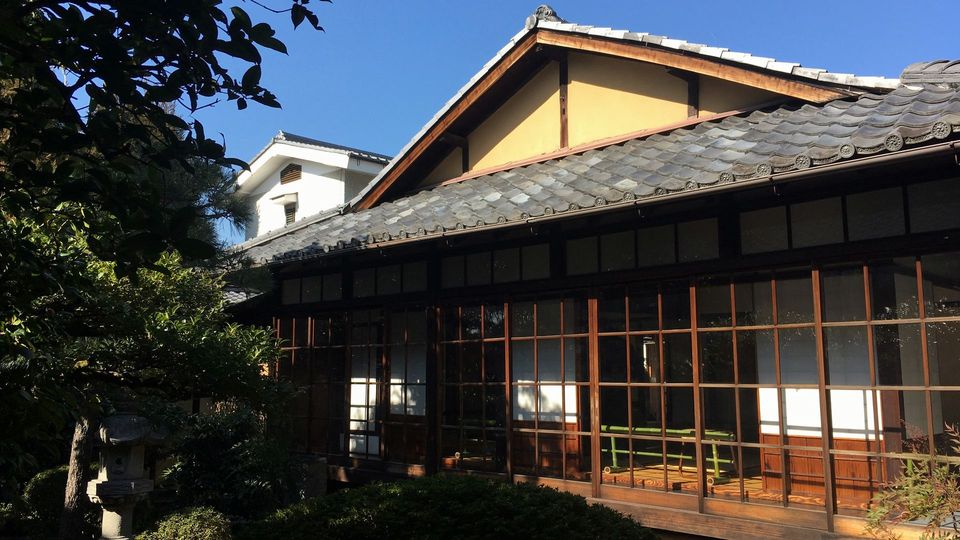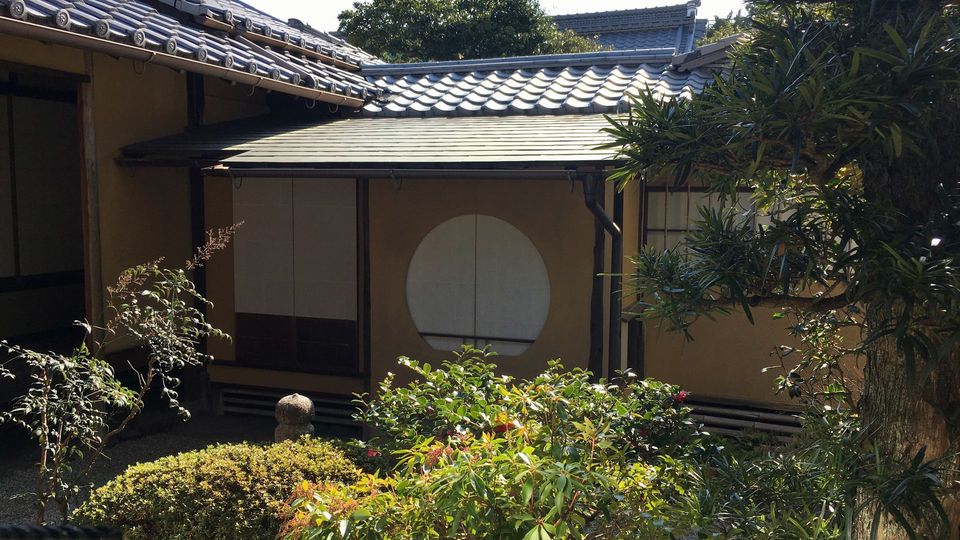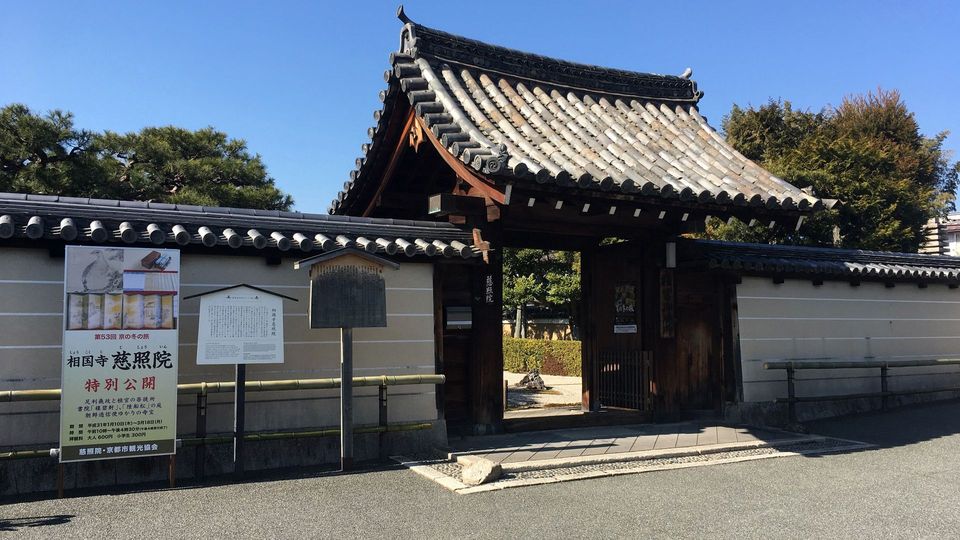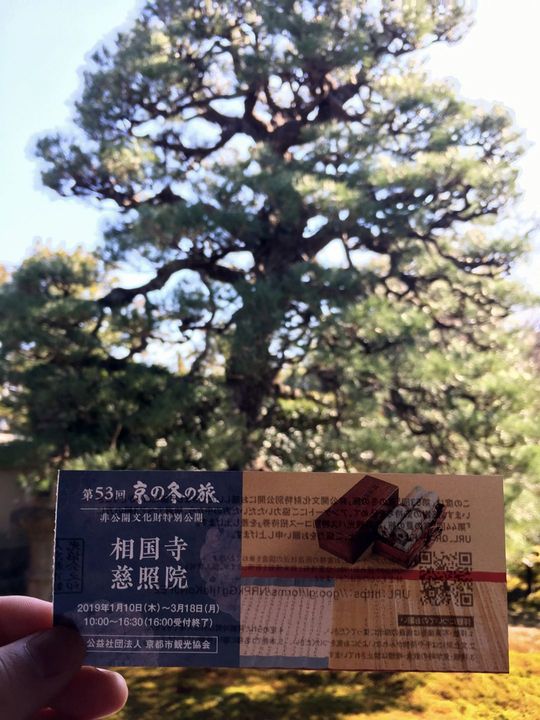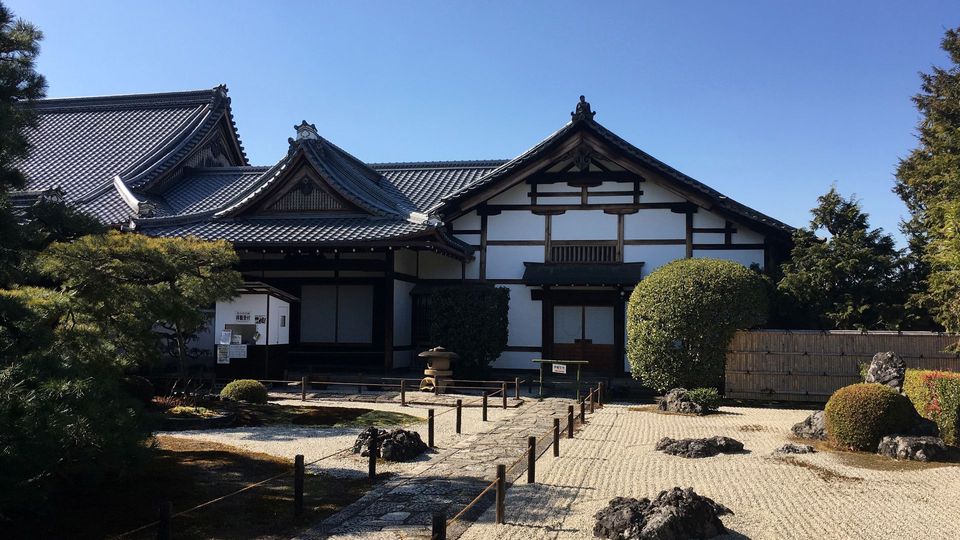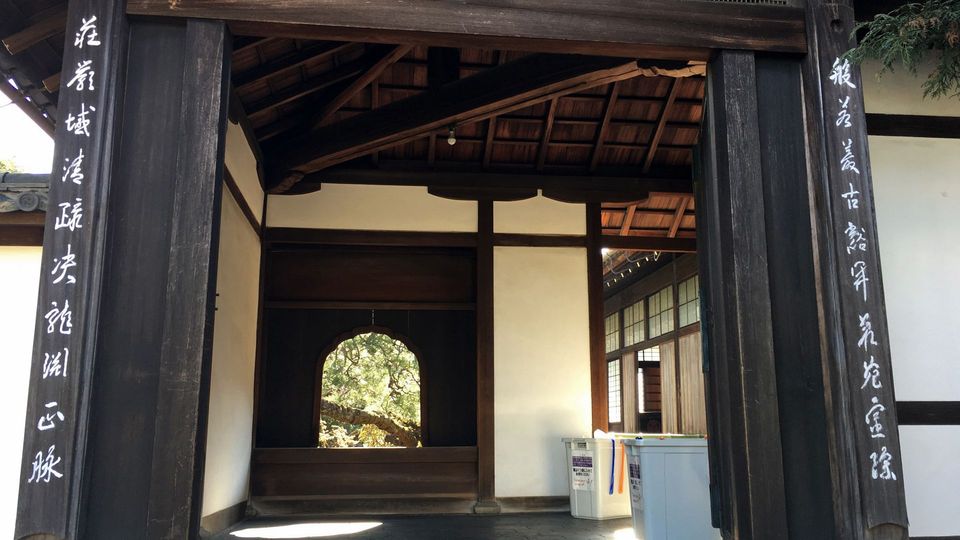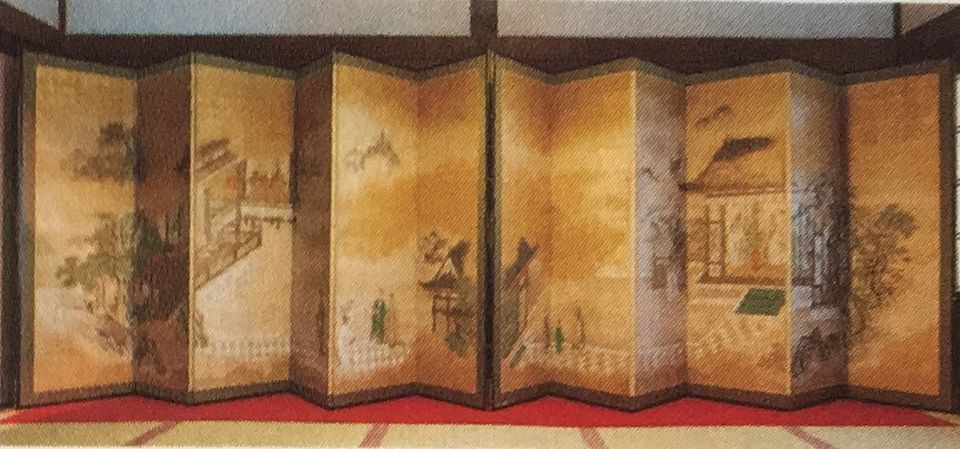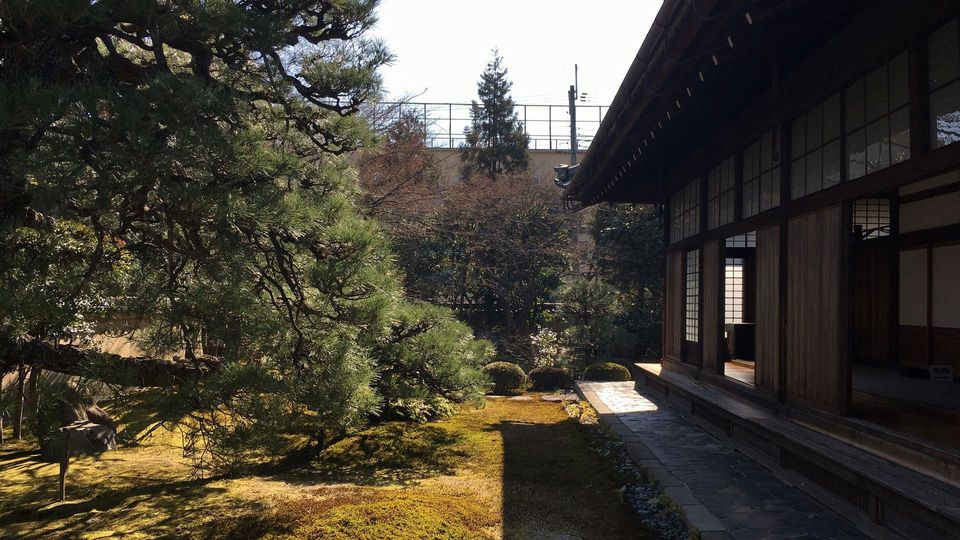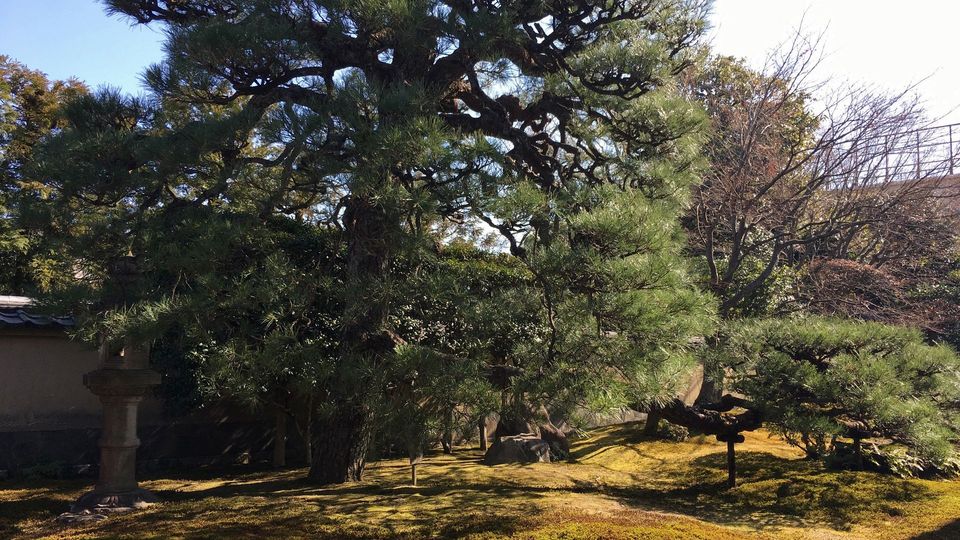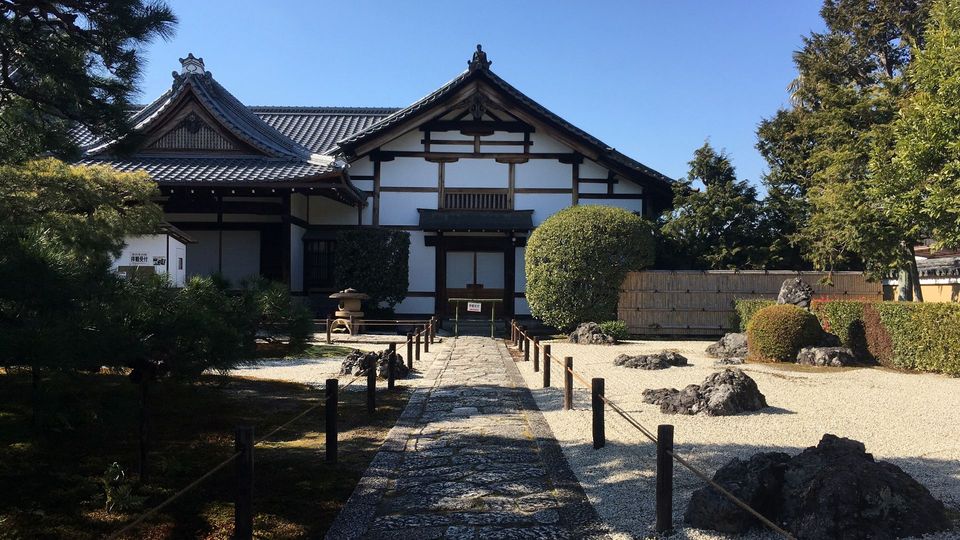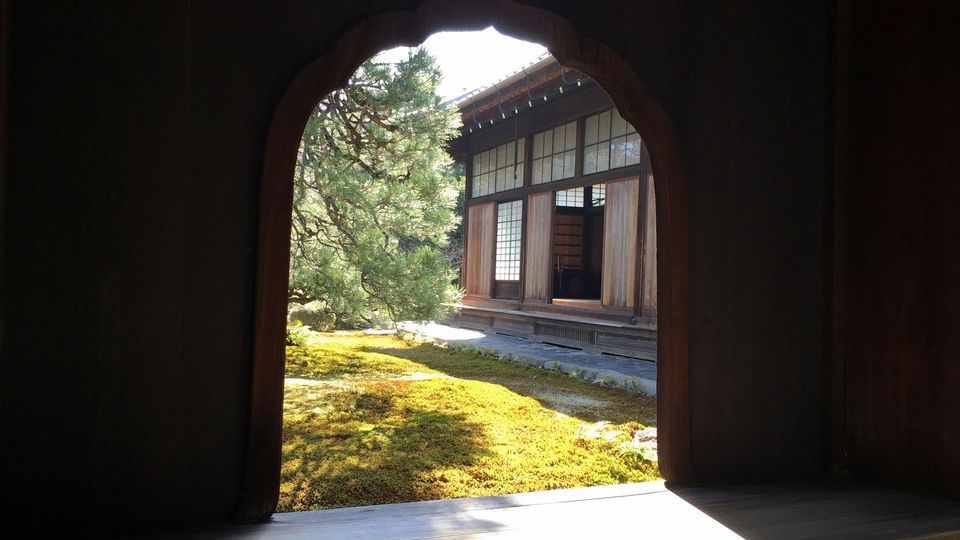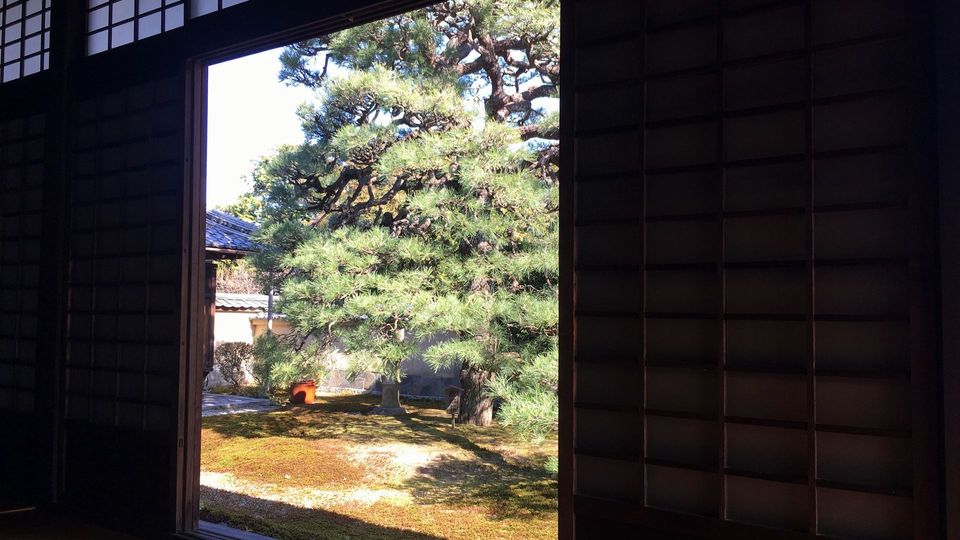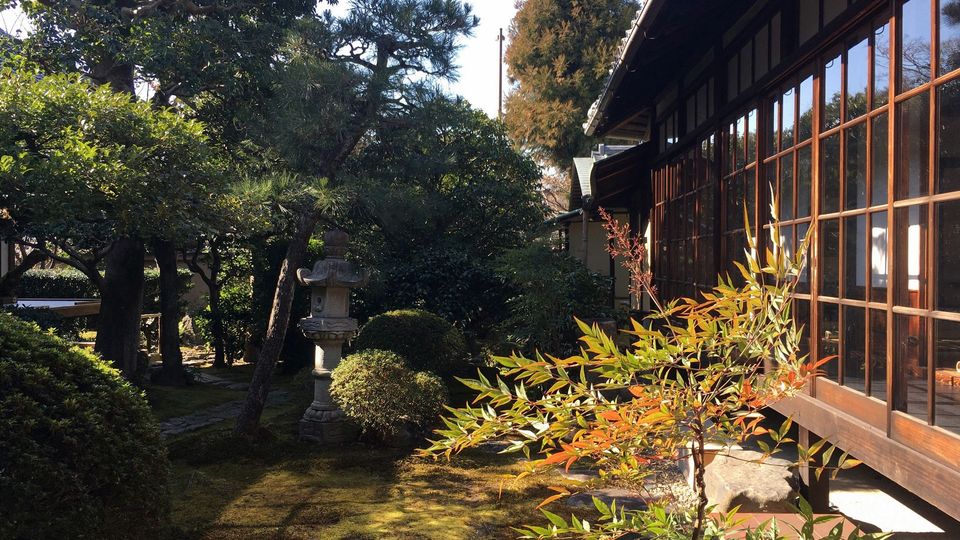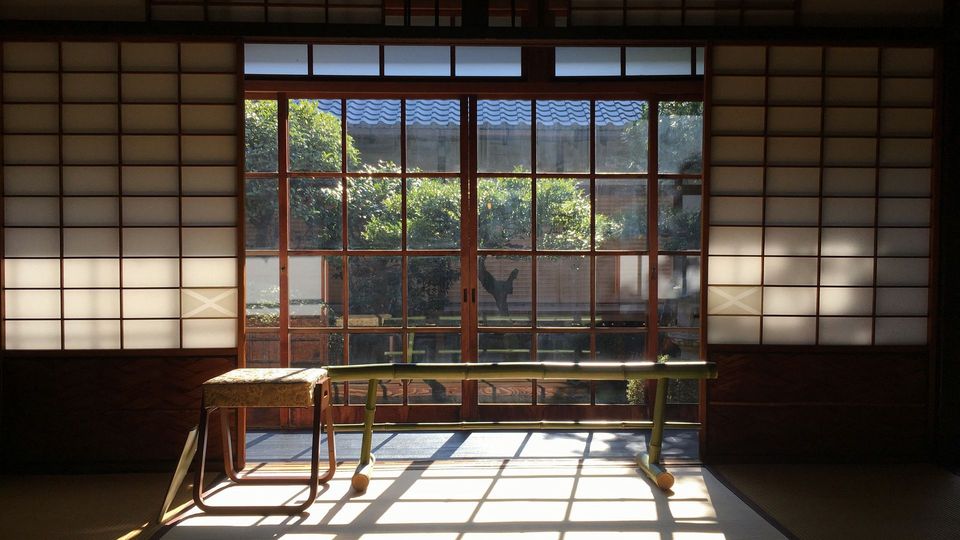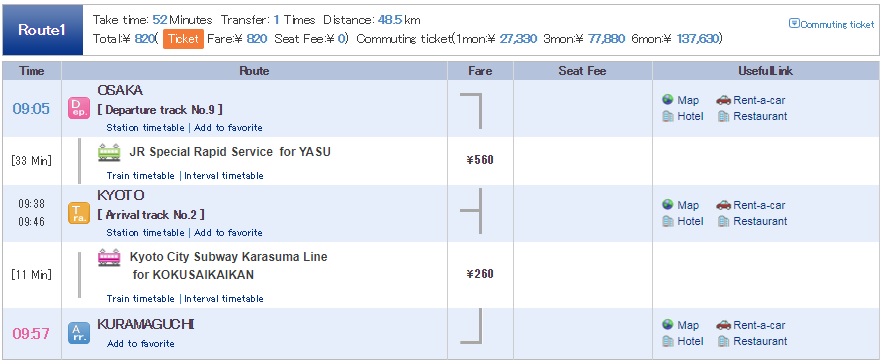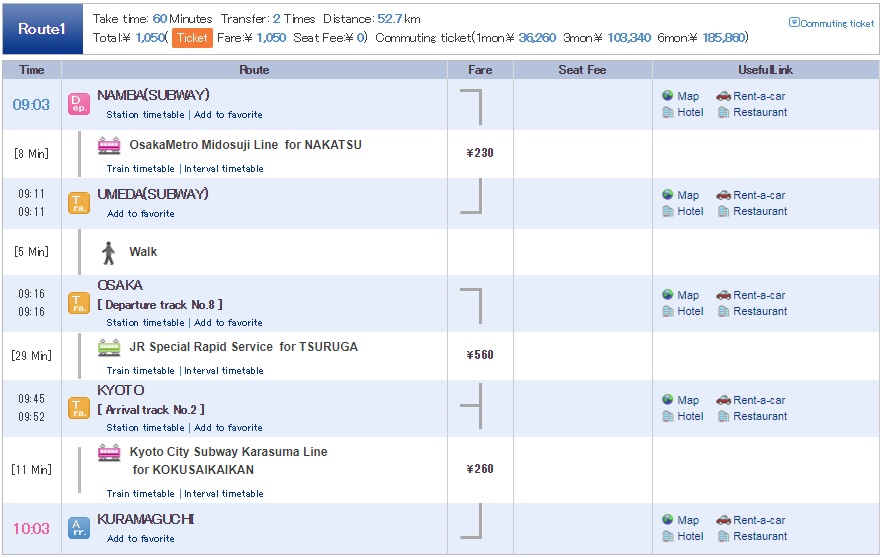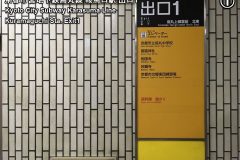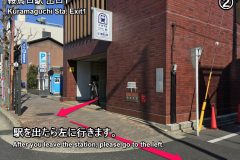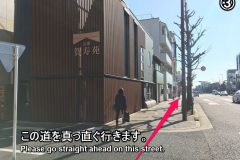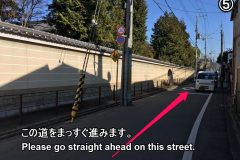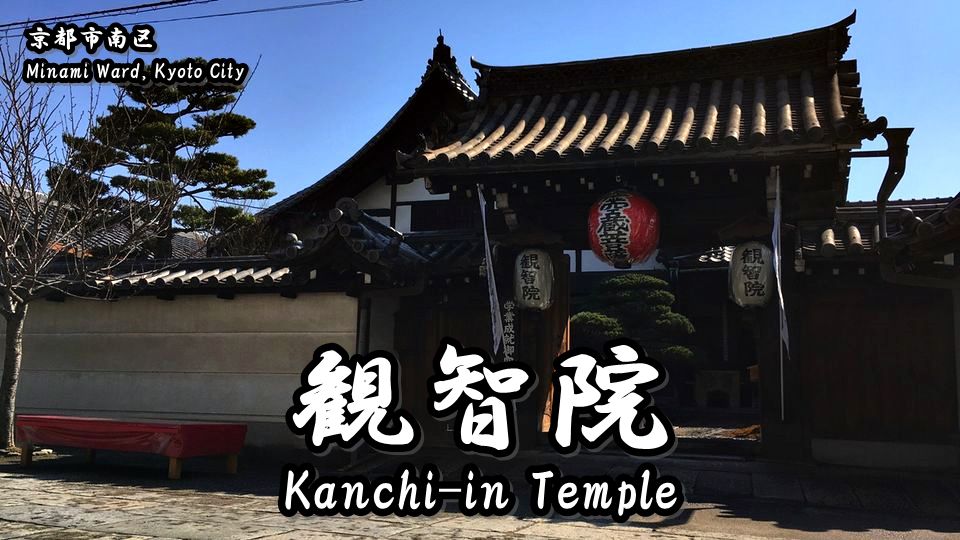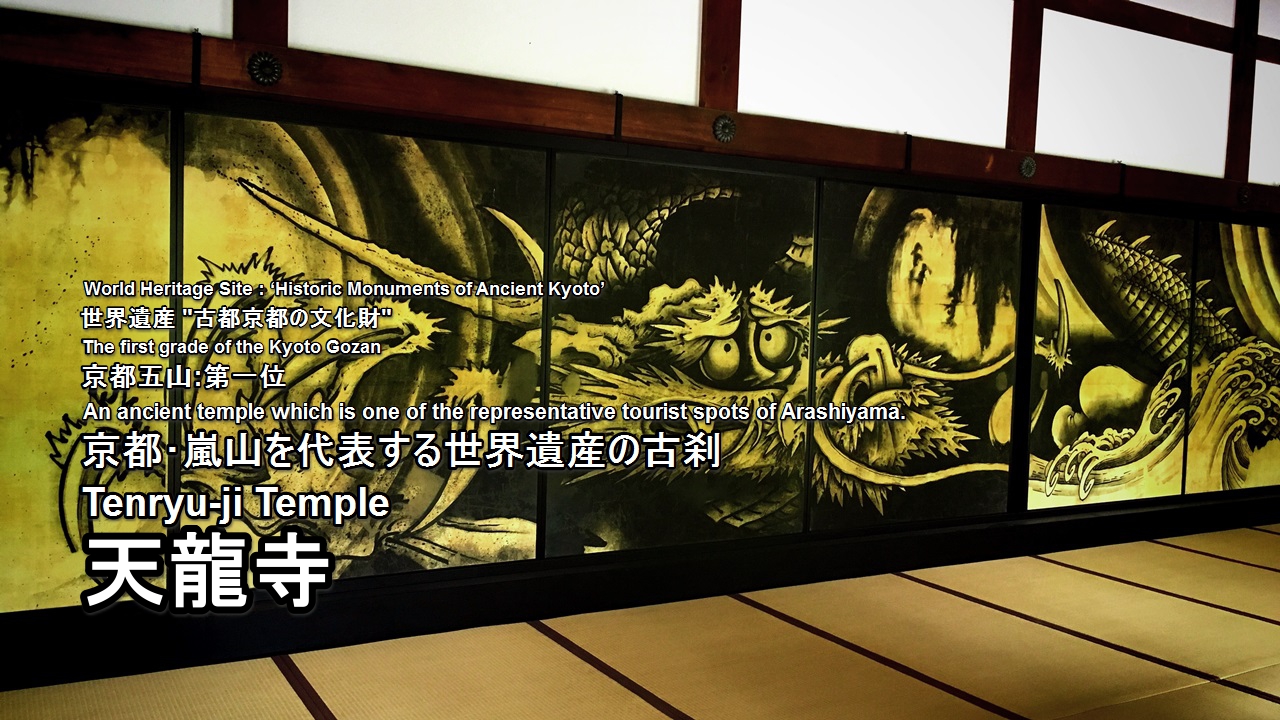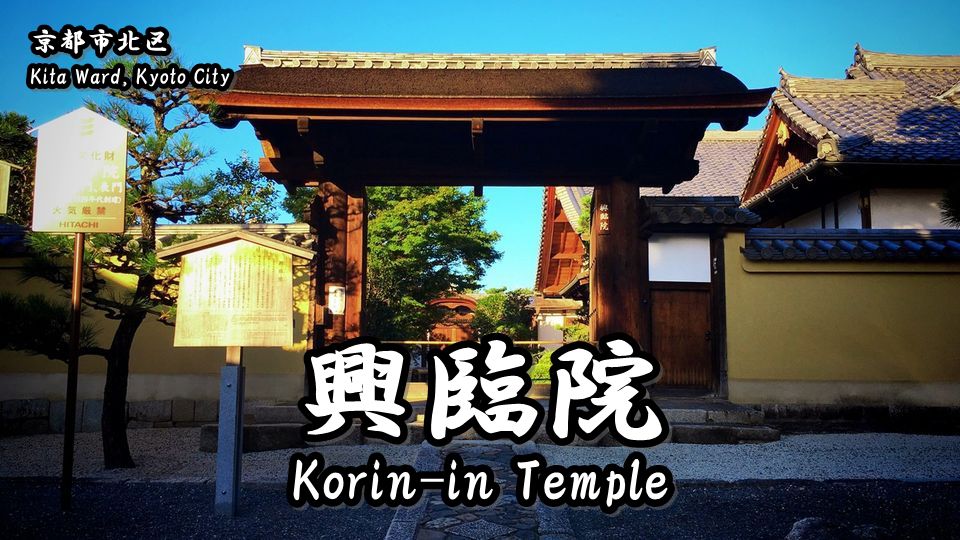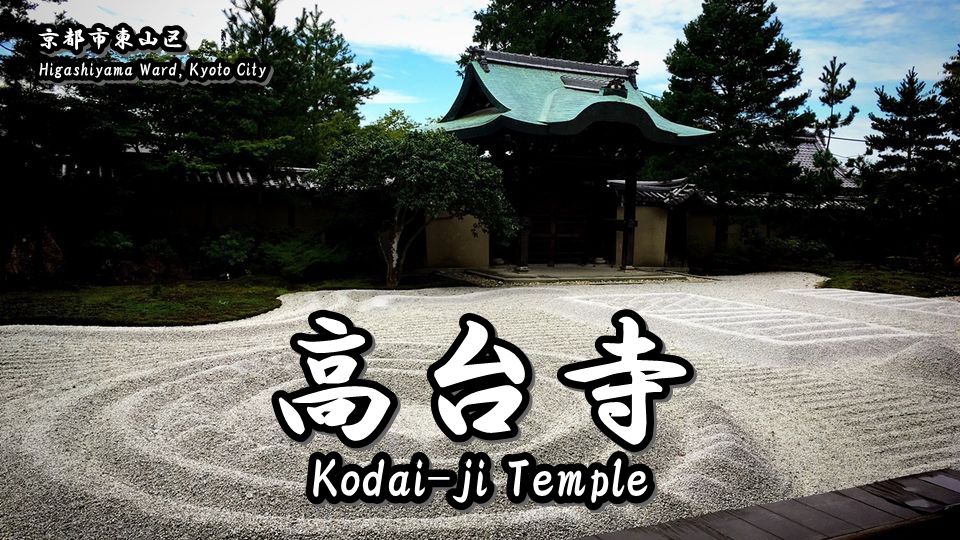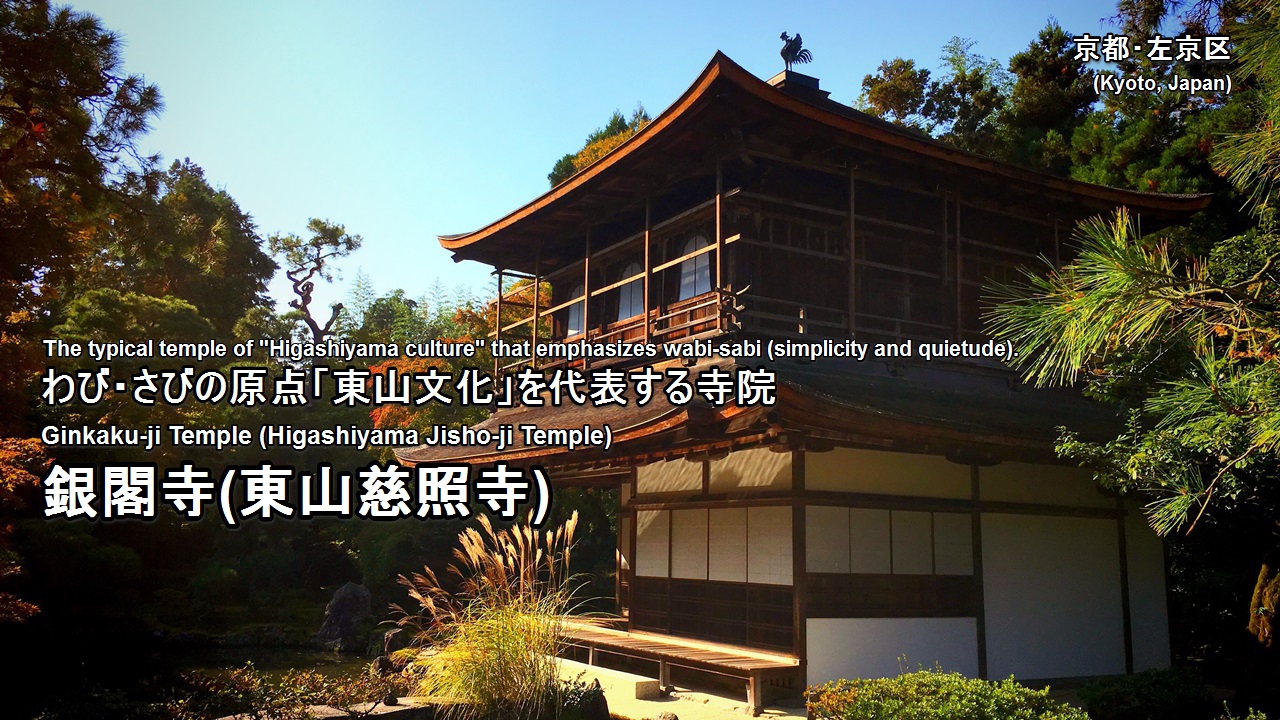Jisho-in Temple (慈照院) is one of sub-temples (塔頭:tatchu) of Shokoku-ji (相国寺) which is located in Kamigyo Ward, Kyoto City.
Shokoku-ji, the head temple of this temple, is the head temple of the Rinzai sect Shokoku-ji School of Zen Buddhism, and it has a total of 16 sub-temples.
This temple was constructed in the Muromachi period of 1405 by a Zen priest and 13th abbot of Shokoku-ji, Chuen ZAICHU (在中中淹).
It is known as the Family temple of the 8th shogun of the Muromachi Shogunate, Yoshimasa ASHIKAGA (足利義政), and one of the houses of an imperial princes, the Katsuranomiya family (桂宮家).
It is only open to the public on specific days (not fixed).
History of Jisho-in
Let’s study the history of this temple with me.
I think that we can enjoy sightseeing of this temple more by learning the history of it. XD
Jisho-in Temple (慈照院) is one of sub-temples (塔頭:tatchu) of Shokoku-ji (相国寺).
Shokoku-ji, the head temple of this temple, is the head temple of the Rinzai sect Shokoku-ji School of Zen Buddhism.
It is one of the Japan’s famous Zen temple and the second of the Five Great Zen Temples of Kyoto.
Kyoto’s famous sites Kinkaku-ji (金閣寺) and Ginkaku-ji (銀閣寺) are also external sub-temples of Shokoku-ji.
This temple was constructed in the Muromachi period of 1405 by a Zen priest and 13th abbot of Shokoku-ji, Chuen ZAICHU (在中中淹).
The original name of this temple was Daitoku-in (大徳院).
When Yoshimasa ASHIKAGA (足利義政) died in 1490, this temple became his family temple.
Because his posthumous name is Jishoin (慈照院殿喜山道慶大禪定門), the name of this temple was renamed to it.
Yoshimasa ASHIKAGA (足利義政) is famous as a person who built Ginkaku-ji.
Therefore, the official name of Ginkaku-ji (銀閣寺) is also Jisho-ji (慈照寺).
In the early Edo period, Kinshuku Kentaku (昕叔顕啅), the 19th head priest of this temple, and Imperial Prince Toshihito HACHIJONOMIYA (八条宮智仁親王), the grandson of the hundred-sixth Emperor Ogimachi were friendly relationship.
(Imperial Prince Toshihito HACHIJONOMIYA is the person who made Katsura Imperial Villa (桂離宮).)
Because of this, this temple has a deep relationship with the Imperial family.
In the precincts there is the building where the Imperial family studies called Imperial family school.
This building is now the Sho-in Hall of this temple called Seiheki-ken (棲碧軒).
In addition, Kinshuku Kentaku (昕叔顕啅) also had a deep relationship with SEN no Sotan (千宗旦) who was the founder of the Sotan school (one of the school of the tea ceremonys).
For that reason, there is the teahouse named ‘Ishinsitsu (頤神室)’ particularly favored by SEN no Sotan in the precincts.
Information for visitors
It is only open to the public on specific days (not fixed).
■Special admission information (Japanese text only)
Below is the information on the Special admission in the winter of 2019.
Information
Address:703, Sokokujimonzencho, Kamigyo-ku Kyoto-shi, Kyoto, 602-0898, Japan
Phone:+81-75-441-6060
Foundation:1405
Founder:Chuen ZAICHU (在中中淹)
Sect:Rinzai Sect (臨済宗)
Principal image:Eleven-faced Kannon Bosatsu (十一面観世音菩薩)
Open
10:00~16:00
Admission Fee
Adults 600 yen, Children 300 yen
Other information
・Please ask temple’s staff where you can take photos and videos.
・Worship method of a shinto shrine and a buddhist temple, please refer to the following article.
Next, let’s go to see highlights of this temple with me!
Highlights of Jisho-in
- 山門(San-mon Gate)
- 客殿*(Kyaku-den Hall)*
- 客殿前庭*(Kyaku-den Garden)*
- 棲碧軒*(Seiheki-ken Hall)*
- 頤神室*(Ishinsitsu Tea House)*
- 境内*(Precincts of the temple)*
- 桂宮家墓地(Graveyard of the Katsuranomiya family)
This mark ‘*‘ is a pay area.
山門(San-mon Gate)
San-mon Gate, at the entrance of an approach to the temple.
客殿*(Kyaku-den Hall)*
Kyaku-den hall is on the left and Kuri (priests’ quarters) is on the right.
It was built in 1671 and extended in 1736 of the Edo period.
There are the beautiful fusuma paintings drawn by painters of the Kano School in this building.
客殿前庭*(Kyaku-den Garden)*
Kyaku-den Garden is a dry landscape garden which has the arrangement of stones, moss and 300 year-old pine tree.
棲碧軒*(Seiheki-ken Hall)*
Seiheki-ken (棲碧軒) was built in the early Edo period.
This building had a role of the Imperial family school.
頤神室*(Ishinsitsu Tea House)*
Teahouse named ‘Ishinsitsu (頤神室)’, particularly favored by SEN no Sotan, was built in the Edo period.
境内*(Precincts of the temple)*
Dry landscape garden of the entrance.
The entrance window called Katomado (火灯窓).
Scenery of the Kyaku-den Garden to watch from the Kyaku-den Hall.
Courtyard of the Seiheki-ken (棲碧軒).
Scenery of the Courtyard to watch from the Seiheki-ken.
桂宮家墓地(Graveyard of the Katsuranomiya family)
Graveyard of the Katsuranomiya family. (No admittance.)
Video of Jisho-in
Photos of Jisho-in
Goshuin (red ink stamp) of Jisho-in
Temple’s Goshuin is “Namu Juichimen Kanzeon (南無十一面観世音)” which is the words to pray for the principal image of this temple.
We can get it in the Kyaku-den hall.
How to get to Jisho-in
Nearest station is Kyoto City Subway Karasuma-Line Kuramaguchi Sta.
We can also go by bus from ‘Hankyu Kawaramachi Station’ and ‘Keihan Gion-Shijo Station’.
From Osaka Sta. (by train)
Timetable and Route Search (train)
1.Get on the JR Kyoto Line from Osaka Station to Kyoto Station and change to the Kyoto City Subway Karasuma-Line.
2.Get on the Kyoto City Subway Karasuma-Line from Kyoto Station to Kuramaguchi Station.
From Namba Sta. (by train)
Timetable and Route Search (train)
1.Get on the Osaka Metro Midosuji-Line from Namba Station to Umeda Station and change to the JR Kyoto Line.
2.Get on the JR Kyoto Line from Osaka Station to Kyoto Station and change to the Kyoto City Subway Karasuma-Line.
3.Get on the Kyoto City Subway Karasuma-Line from Kyoto Station to Kuramaguchi Station.
From Kyoto Sta. (by train)
Timetable and Route Search (train)
1.Get on the Kyoto City Subway Karasuma-Line from Kyoto Station to Kuramaguchi Station.
From Kuramaguchi Sta. (on foot)
It’s about 7 minutes (400m) on foot.
Get on a bus from Hankyu Kawaramachi Sta.
Timetable and Route Search (bus)
Please get on a Kyoto City Bus No.15 or 51 or 59 (Shijo-Kawaramachi[A]) and get off Doshisha-mae (Doshisha Univ.).
Bus company:Kyoto City Bus
Routes/Destination:No.15 or 51 or 59[Bound for Ritsumeikan Univ. or Ryoanji Temple Via Kinkakuji Temple]
Boarding bus stop:Shijo-Kawaramachi[A]
Alighting bus stop:Doshisha-mae (Doshisha Univ.)
Bus fare:230 yen
Time required:About 20 min
[Timetable]Route No.15
[Timetable]Route No.51
[Timetable]Route No.59
Please get on a Kyoto City Bus No.201 (Shijo-Kawaramachi[E]) and get off Doshisha-mae (Doshisha Univ.).
Bus company:Kyoto City Bus
Routes/Destination:No.201[Bound for Hyakumanben Via Gion]
Boarding bus stop:Shijo-Kawaramachi[E]
Alighting bus stop:Doshisha-mae (Doshisha Univ.)
Bus fare:230 yen
Time required:About 20 min
[Timetable]Route No.201
Get on a bus from Keihan Gion-Shijo Station.
Timetable and Route Search (bus)
Please get on a Kyoto City Bus No.15 or 51 or 59 (Shijo Keihan-mae[C]) and get off Doshisha-mae (Doshisha Univ.).
Bus company:Kyoto City Bus
Routes/Destination:No.15 or 51 or 59[Bound for Ritsumeikan Univ. or Ryoanji Temple Via Kinkakuji Temple]
Boarding bus stop:Shijo Keihan-mae[C]
Alighting bus stop:Doshisha-mae (Doshisha Univ.)
Bus fare:230 yen
Time required:About 20 min
[Timetable]Route No.15
[Timetable]Route No.51
[Timetable]Route No.59
Please get on a Kyoto City Bus No.201 (Shijo Keihan-mae[C]) and get off Doshisha-mae (Doshisha Univ.).
Bus company:Kyoto City Bus
Routes/Destination:No.201[Bound for Hyakumanben Via Gion]
Boarding bus stop:Shijo Keihan-mae[C]
Alighting bus stop:Doshisha-mae (Doshisha Univ.)
Bus fare:230 yen
Time required:About 20 min
[Timetable]Route No.201
Take a taxi
From Kyoto Station:About 2,700 yen (about 15 minutes)
From Gion-Shijo Station:Abou 1,900 yen (about 10 minutes)
・Let’s show a taxi driver the following phrase.
・If you want to call a taxi, let’s show the following phrase.
[Phone number of taxi dispatch : Around the Kyoto Station]*Japanese text only.
Hotel search & reservation
How did you like it?
Have a nice trip! XD

